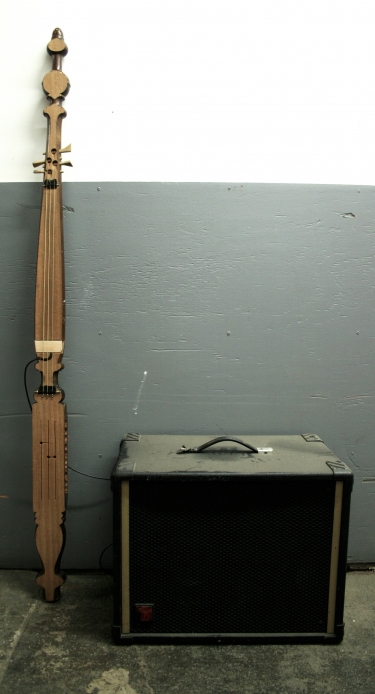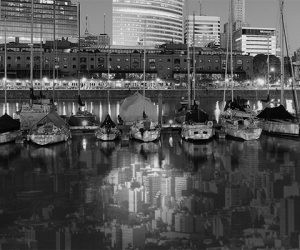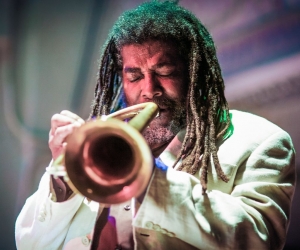
On a brisk fall afternoon in October, about two dozen people hunkered down in the intimate main room of Chicago’s Experimental Sound Studio. They watched some of the city’s more open-minded musicians—including guitarist Leroy Bach and drummer Mikel Avery—improvise on instruments that looked and sounded familiar, yet stood apart for their sculptural beauty.
The instruments are a project of Chicago artist and woodworker John Preus, and were on display in the recent ESS exhibition Slow Sound, the title a clear reference to the slow food movement. At one point, bassist Matthew Lux (a regular collaborator of cornettist Rob Mazurek and a touring member of Iron and Wine) sat down and picked up an ornately carved bedpost fitted with bass strings and a pickup, while his daughter Nora sat on the ground, picked up a pair of mallets and began tapping out rhythms on a drum built from an old tabletop. There was something poignant in watching the artist’s handiwork used in tandem by both a seasoned musician and a fledgling one.
Preus isn’t your typical instrument inventor. Each piece in the exhibition was loosely based on a conventional instrument—a guitar, a bass, a cajón. His work, he says, isn’t concerned with musical innovation. “I’m not out to make new and unfamiliar sounds. I feel more like the guy who decides to build his own house, not because he wants to be a student of architecture, but because it is his house and he wants to know it from the inside out, and have his own blood mingled with its composition. Or maybe it’s like killing your own meat rather than getting it in sealed packets from the grocery store.”
Preus’ practice at large is devoted to repurposing discarded materials and giving them new life, whether by salvaging desks from Chicago public schools or by scavenging the contents of abandoned houses. His work has been used as fixtures in Chicago coffee houses, and was part of artist Theaster Gates’ 12 Ballads for Huguenot House installation in Documenta 13 in Kassel, Germany, in 2012. The instruments in Slow Sound feel modest in comparison to his furniture and installation work, but they emerge from the same impulses: “To give voice to something inanimate, abandoned, and dumb, and to use the occasion of abandonment as a generative opportunity.”
The son of Lutheran missionaries, Preus grew up in Tanzania where he observed homemade instruments all around him. “I was always fascinated by thumb pianos, how simple they were and the range of sound that was possible,” he says. “And they were often made out of whatever was around—boxes of one kind or another, tins, cigar boxes; and the metal tines were also scrapped and salvage metal parts.” Indeed, his own thumb piano in Slow Sound was a cigar box transformed into the instrument’s resonator with brushes from a street sweeper functioning as metallic tines.
“Improvisation in music is common, but not in building . . . certainly not in architecture or furniture-making. So part of the interest was to apply or combine forms of improvisation and to see what sort of thing might emerge. Maybe the music will make its way back into form of some kind.”
FYI: Discover more about John Preus.
Image: Amplified bedpost. Image by: Sean Hernandez.


